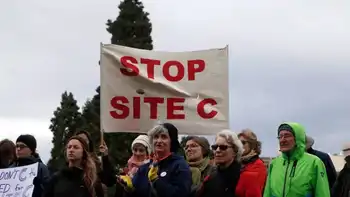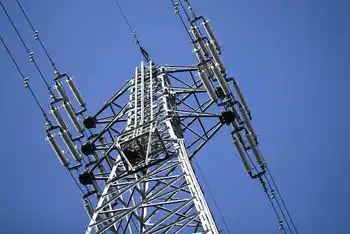4 of 6 reactors are write-offs – TEPCO
By Toronto Star
NFPA 70e Training - Arc Flash
Our customized live online or in‑person group training can be delivered to your staff at your location.

- Live Online
- 6 hours Instructor-led
- Group Training Available
Hidehiko Nishiyama, deputy director general of the Nuclear and Industrial Safety Agency, said that seawater tested near the Fukushima Daiichi Nuclear Power Station was found to contain iodine 131 at 3,355 times the safety standard. He said the readings, taken from samples collected about 300 yards from the plant, posed no immediate threat to public health, and no fishing was being conducted in the area.
Tokyo Electric Power Co. TEPCO, the operator of the plant, said it would write off four of the six reactors at the facility, a move many analysts have said was inevitable following damage to the units since the March 11 earthquake and tsunami. It was the first time the company explicitly acknowledged that much of its multibillion investment is irrecoverable.
"We have no choice but to scrap" the No. 1, 2, 3 and 4 units at the Fukushima Daiichi Nuclear Power Station, Tsunehisa Katsumata, chairman of Tokyo Electric, told a news conference.
He said the No. 5 and 6 units were still operational, but said any restart of those would depend on consultation with the government and local residents.
Yukio Edano, the chief government spokesman, appeared skeptical of reviving the No. 5 and 6 units, telling an afternoon news conference that "the decision is pretty obvious."
In a separate development, smoke was seen rising from a second nuclear power plant run by Tokyo Electric Power, the Fukushima Daini plant, about 9.6 kilometres south of the Fukushima Daiichi complex.
At 5:56 p.m., smoke was seen coming from the turbine building of the No. 1 reactor, a spokesman for the nuclear safety agency said. The smoke ended at 6:13 p.m., he said. Local firefighters determined that the source was a problem with a power panel in the building, and the situation was under control, the spokesman said.
The Daini plant was not significantly damaged by the quake and tsunami and never lost external power to its cooling systems.
Katsumata, 71, is taking over leadership of TEPCO after the president, Masataka Shimizu, 66, was hospitalized. Shimizu was being treated for hypertension and dizziness, the company said.
Other than a news conference on March 13 where he apologized to the public, Shimizu has been largely absent since the disaster struck. Japanese media had been rife with theories on his disappearance with some even reporting rumors that he had committed suicide.
Katsumata also offered his "sincere apologies" to those affected by the nuclear crisis, which has forced thousands of people to evacuate the area around the plant and left farmers unable to sell radiation-tainted produce.
In recent days, the announcements of mounting contaminated water in the plant, as well as the discovery of plutonium traces in the soil outside the facility and an increasingly dangerous environment for plant workers have forced government officials to acknowledge the dangerous side effects of measures taken to keep nuclear fuel cool.
Edano said that government and nuclear experts are considering new steps to prevent the spread of radiation from the plant, such as covering the reactors with a special cloth to reduce the amount of released radiation. Edano also said the government is considering using a tanker to collect contaminated water.
Meanwhile, Greenpeace, the anti-nuclear environmental organization, gave guarded endorsement to the radiation data published by the Japanese government concerning the Fukushima plant.
The organization, which has a well-known anti-nuclear stance, had said that it was coming to Japan to provide "an alternative to the often contradictory information released by nuclear regulators."
There has been some public mistrust regarding the official data, with fears exacerbated by occasionally contradictory announcements. But Jan van de Putte, a Greenpeace official, said that its scientists' findings largely correlated with the official Japanese data.
"There is no contradiction between Greenpeace data and local data," he said. "The contradiction is between the data, and action to help people" in the affected areas.
The organization recommended that the government move more aggressively to evacuate residents near the complex.
But van de Putte declined to say whether he recommended expanding the Japanese government's evacuation zone beyond the 30-kilometre band that is now the de facto standard after officials began encouraging people 20 to 30 kilometres from the plant to leave.
The U.S. government has recommended that people stay at least 80 kilometres away from the plant.
The National Police Agency said the number of dead from the March 11 quake and tsunami had risen to 11,258, with 16,344 people still missing.











